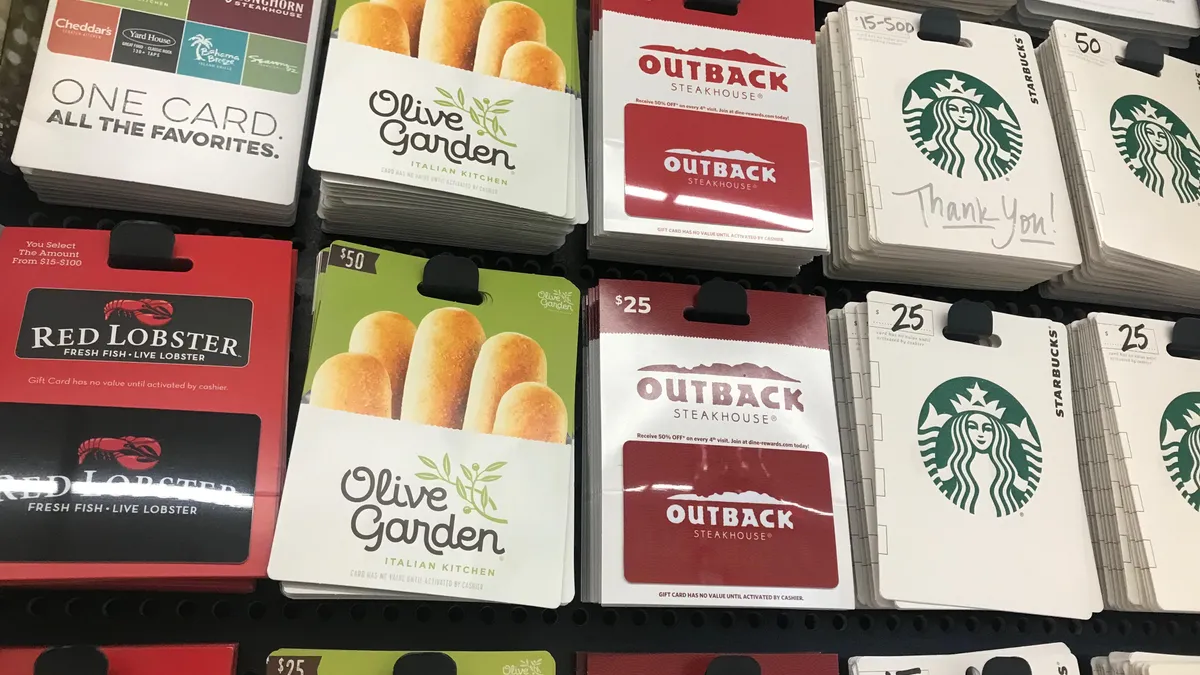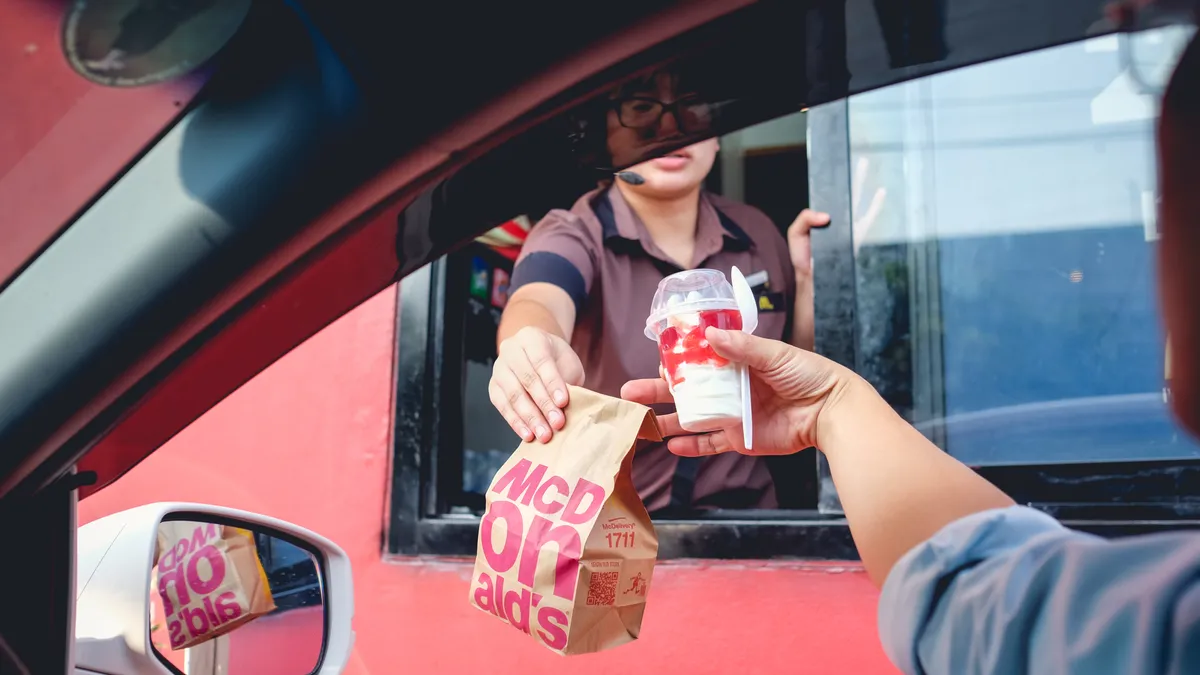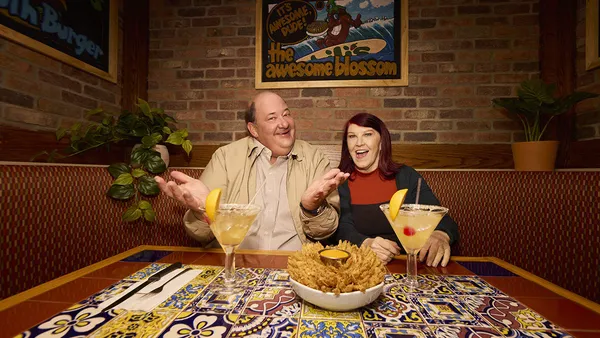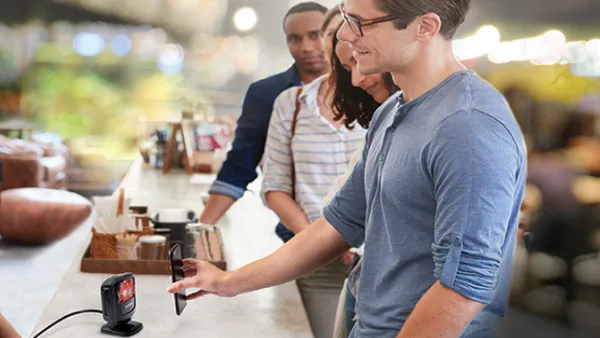Dive Brief:
- Restaurant gift card sales increased 10% from 2017 to 2018, but just a 1% uptick from 2018 to 2019, according to Paytronix's Annual Gift Card Sales Report: 2020 emailed to Restaurant Dive. Data is sourced from gift card sales processed between Jan. 1, 2016 through Dec. 31, 2019, with redemption data extending through March 20.
- Quick-service and casual dining segments generated 70% of the 1% annual growth from 2018 to 2019, while fine dining experienced a dip from 2017 to 2018 but a slight increase in 2019.
- While more than 50% of gift cards sales were in-store, third-party retail drove over 44% of sales in 2019. Corporate sales only accounted for about 5% of sales.
Dive Insight:
Despite the plateau in 2019, the recent growth in gift card programs shows that restaurant brands’ efforts to increase access to such cards — selling them at big box retailers, grocery stores, drug stores, everywhere — is paying off. Such programs are an effective tool to increase sales and build loyalty. They can also convert new customers by giving them a reason to visit.
While this data was collected prior to the COVID-19 outbreak, the pandemic may have helped make up for some of the lost gift card sales from third-party retailers, which also had to shutter their doors. As dining rooms across the country were forced to close, gift cards became one of the few lifelines restaurants had to maintain a revenue channel. Many places pivoted their marketing messages to encourage gift card sales. According to xtraCHEF, for example, restaurant group CookNSolo held a gift card sales drive to raise money for employees. Eniac Ventures teamed up with startup lunchbox.io to create helpmainstreet.com, where customers can purchase gift cards from more than 20,000 restaurants across the country.
Restaurant adjacent companies have also encouraged restaurant gift card purchases. In March, for example, POS company Toast launched “Rally for Restaurants,” where guests can purchase gift cards to their favorite restaurants to show their support. Tripadvisor launched a feature in April that directs customers to restaurants’ gift card purchase links.
The International Card Manufacturers Association also predicts that the pandemic could spur an increase in digital, contactless gift cards, which bodes well for companies like Starbucks, which is mobile-based and provides an incentive for customers to keep reloading the card.
That doesn’t mean, however, that gift cards are a silver bullet. While the sale itself goes directly to a restaurant’s bottom line, only when a gift card is redeemed is it considered taxable income on a profit/loss statement, so budgeting can be a challenge with this model. According to CNBC, about $21 billion in unredeemed gift cards existed in the U.S. prior to COVID-19.
That’s not to say promoting such a program isn’t worth the added revenue stream, especially since 80% of the customers who do redeem their gift cards spend more than the value of that card when using one. QSRs specifically had a 6% increase in check size for online orders paid with a gift card according to last year’s report. There is also that chance for new customers and added loyalty, two major objectives in a challenging environment.














